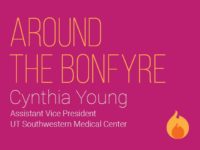Les Landes’ approach to engagement in the workplace sidesteps many of the common stumbling blocks that have arisen from engagement’s central focus in 20 years’ worth of strategic business discussions.
Employee engagement as we know it has come to be viewed as a nearly limitless well of potential for the human workforce. It’s a just-of-reach-frontier that, if accessed and harnessed, will propel employees and businesses beyond their limitations to reach new levels of performance, profitability, and prosperity.
But the business world’s search for this greater understanding of human motivation has not been without pitfalls. With it has come an intense scrutiny from thought leaders and experts who grafted their personal understandings of engagement onto one-off programs and perks that do not address its root causes. As a result, “employee engagement” as both a definable term and an operationalized concept is frequently twisted into something indecipherable.
Landes has built a career out of navigating these obstacles with a methodology that cuts straight to the heart of the drivers of engagement in the workplace. As the Founder and President of the St. Louis-based firm Landes & Associates, Landes works with a clientele of manufacturers, nonprofits, professional services firms, and more to build sustainable systems that engage employees. That word–systems–lies at the center of his approach.
Landes defines engagement in the workplace
Landes’ perspective on engagement in the workplace is informed by his background as a business communicator. “Communication is the foundation of my work,” Landes says.
Out of college, Landes worked with David K. Berlo, an academically renowned communications consultant and theorist perhaps best known for developing the Sender-Message-Channel-Receiver model of communication.
Berlo was a great influence on Landes, particularly his thinking on human beings, human nature, and what it takes to build the environment where people are able to do and be their very best. Later, Landes progressed to communications roles with Maritz Motivation Company and Pet, Inc. before transitioning into consulting roles like the one he holds today.
It’s clear from conversations with Landes (and his own written work) that he has a distinct ability to simmer business concepts, often mired in hard-to-follow jargon, down into language that’s both refreshing and accessible. His definition for employee engagement stands out as a testament to this skill.
“It’s an emotional connection that employees feel for their work or organization that gets them tuned in, turned on, and eager to go above and beyond,” Landes says.
Accessibility, however, should not be mistaken for a lack of complexity. When it comes to building an effective engagement culture, Landes departs from many thought leaders in the space at a foundational level.
According to him, most people understand the fundamental concept that emotional connections with employees drive greater performance outcomes. But the methodology used to create those connections leads to one-off activities that fail to do anything of the sort.
“The problem is when you do that, it becomes a program instead of something that is woven into the fiber of everyday business,” Landes says. “Systems and processes are the way we do things every day.”
What is the program trap?
Business leaders’ tendency to lean into these one-off engagement activities is a phenomenon Landes calls “the program trap.” It’s a core concept in Landes’ engagement philosophy that he describes as “a persistent fixation on jargon, symbols and rituals over substance and systems.”
“They’re icing on the cake,” Landes says. “Nobody sits down and says, ‘I just want the icing, forget the cake.’ Well, maybe a three-year-old says that, but without the cake you’ve got nothing.”
The usual suspects, of course, fall into the program trap: pizza parties, foosball tables, and the other ‘quick fixes’ implemented to keep employees happy. But the program trap’s reach extends much further than that. The initiatives that many consider “tried-and-true” jump-starters for engagement in the workplace, like employee of month programs, have a more insidious effect than you might think.
“What a terrible thing to do to a team,” Landes says. “Nobody ever accomplishes extraordinary things on their own in a high-functioning, high-performance culture.”
These awards are thought to work along the same logic as the expression “a rising tide lifts all boats.” When one employee is awarded for outstanding performance, their peers will be motivated to step up their game. At least, that’s the theory. Landes, leaning on his experience in the incentive industry, has a different thought on their effects. While these awards may feel great to the awardees initially, the impact is short-lived, and their peers don’t necessarily feel the same way.
“No one gets particularly inspired by seeing one person singled out for being better than everyone else, and you rarely see people going the proverbial extra mile to win next month’s accolades.”
This misalignment between what managers think and how employees really feel is not uncommon. Landes points to a George Mason University analysis of extra effort drivers as proof of this disconnect. In the study, employees and leaders were separately asked which aspects of work motivate employees to go “above and beyond.”
The results illustrated a clear gap between what leaders think motivates employees, and the drivers that actually motivate them. For example, leaders ranked “good wages” as employees’ top extra effort driver. What did employees rate first? Interesting work. In fact, there was no overlap whatsoever between the bosses’ rankings and employees’ rankings of motivators.
What’s more, the first three of employees’ top five motivational drivers have very few hard dollar costs associated with them
- Interesting work
- Appreciation of work done
- Feeling “in on things”
“That said, creating a culture that fosters those drivers isn’t easy,” Landes emphasizes. “You’ve got to make substantive, systemic changes in how you do things in the workplace, and that can be very difficult for organizations.”
Related: Improve the Employee Experience by Building Trust in the Workplace
Building systems for engagement in the workplace
Landes’ strategy for engagement in the workplace is built upon two pillars–both aimed at building a high-performance culture of trust that the company must diligently maintain. How does Landes define trust?
“It’s a belief that people will do the right thing, in the right way, at the right time,” he says, adding that it needs to permeate all layers of the organization. “To perform at their best, people need to have that feeling about their colleagues and the people they report to that they can count on one another.”
The first of the two main pillars for sustaining trust is what Landes calls “management credibility factors.” Through their interactions with employees, managers that embody these credibility factors must strike the right chord in exhibiting care and concern, honesty and openness, responsiveness, competence, reliability, and apology and accountability. Landes notes that the last item–apology and accountability–is a common struggle for leaders.
“Managers are pretty bad at that in general because they think it shows weakness and vulnerability,” he says. “But if they’re really good at that, and say, ‘My bad. Here’s what I did wrong. Here’s where we’re going to go and I need your help,’ then credibility is always increased.”
The second pillar in his strategy involves restructuring organizations around “people-first policies, processes, and systems.”
“We have to make sure that these structural factors are designed to tell employees they’re the number one priority,” Landes says. “The reason is simple. If we do right by employees, they’re going to do right by our customers, patients, clients, etc.”
Landes helps organizations develop people-first systems, policies and processes in five main areas:
- Measurement
- Recognition
- Communication
- Learning and Development
- Continuous Improvement.
In practice, these five focal points are optimized to give employees more opportunities to be heard, valued, and to contribute. For example, in the area of measurement, Landes says that the metrics businesses measure first is a clear indicator of where their priorities lie.
“Are we measuring gross margins first or are we measuring the amount of time and investment we’re putting into the learning and development of employees?” Landes asks.
Like many in the culture space, Landes observes that what’s required to produce greater engagement in the workplace is not some great secret. “When you get right down to it, it can be so incredibly simple,” he says. “It’s really as basic as ABC. People want to Achieve, they want to Belong, they want to Contribute.”
Simple as it may be, operationalizing cultures of trust and people-first systems takes no small amount of effort from the people with the ability and authority to change how people work together. In spite of initial change efforts, human beings still have a tendency to rely on the old habits and processes that created the problems in the first place.
And while Landes isn’t one to sugarcoat the amount of effort it takes to affect real change, his perspective is ultimately an optimistic one. In Landes’ view, humans are uniquely designed to make real change happen for two main reasons: imagination and free will. “It really is in our nature to want to improve things; that’s why God gave us imagination,” he says.
“We have the unique capacity to reflect on how things can be better today than they were yesterday and how tomorrow can be better than today.”
If imagination is what helps us conceptualize change for the better, then free will is what enables us to make it happen. Unlike animals–birds for example–humans are the only creatures with the ability to bypass their instinctual programming and do what they choose instead. “We’re the only ones who can say, ‘I know the early bird gets the worm, but damnit I’m going back to bed,’” Landes quips. By harnessing our capacities for imagination and free will in tandem, a core concept about engagement in the workplace reveals itself:
“Since people are animals, too, we are also creatures of habit,” Landes says. “So you have to create a habit for continuous improvement that breaks the habit of doing things over and over again the same way, every day, all the time,” Landes says. “You need a habit to break the habit. If we don’t do that, we keep people trapped in their animal programs, and we make it impossible for them to break out and excel in their work.”
Landes points out one more reality about the importance of having workplaces that nurture imagination and free will. “Humans beings–especially adults–really don’t like being told what to do all the time,” he says. “Bottom line, people must have control over the decisions and actions that affect their lives in order the perform at their best.”
That doesn’t mean everyone should be able to do anything they want any time they feel like it, Landes adds. It takes just as much structure and discipline–even more so–to run an organization grounded in the value of fostering imagination and free will as one driven by command and control authority.
“Striking the right balance, and making it all work comes to having the right mind-set about people and workplaces, along with the right heart-set and the systems and processes to put those essential principles and processes into every day operation.”



 7 min
7 min




